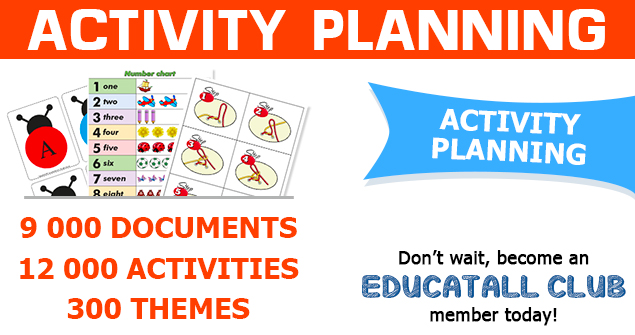Noise
As daycare workers, our body is under constant solicitation. It is important to take care of ourselves if we plan to fulfill our responsibilities for years to come. I want to make you aware of a part of our body which is sometimes forgotten - our ears. In the heat of the moment, we often do not notice that the decibels our ears endure are extremely high. In daycares, noise has many sources. Children crying, toys, moving furniture... There are many negative impacts of the high noise level for adults and children alike. Among others, the situation can make us irritable and affect our mood and our patience. This applies to children too. Functioning in a noisy environment can be very stressful for children and make them less tolerant of various daily situations. Furthermore, depending on the decibels, severe headaches can appear and hearing can be affected. Here are a few tricks which could help you avoid noise-related problems.
- An empty room is noisy. Hang decorations from the ceiling to fill up your space. Foam shapes absorb noise.
- Install rugs or mats in the areas where children play with cars, trucks, or construction material. Large foam puzzle pieces are ideal. Assemble them to obtain the size you need.
- Punch holes in tennis balls and place them under the legs of chairs and tables. They will produce less noise when children move them about.
- Limit the use of music to musical activities. Avoid background music to allow ears to rest. Music can be played during naptime but it is recommended that it be stopped once children are asleep.
- Go on a tour of your daycare analyzing the following: do you have any small yet noisy household appliances which operate unnecessarily, are you able to use them less often or eliminate their use altogether?
- Avoid loud games. Opt for games with adjustable volume levels.
- Alternate between noisy and calm activities throughout the day.
- Teach children the proper way to communicate. Remember to serve as an example. Show them to stand close to the person they are speaking to or to use gestures to express certain emotions or things.
- Plan activities involving silence. Play Mr. Silence for example. To do so, simply call Mr. Silence and pretend to search for him. He hides when it is too noisy and comes out when it is very quiet. Children will love to tell you they have seen him hiding behind the door, under the table, etc. Discrimination activities can also be useful. Have children listen to sounds and identify them. They must remain silent in order to hear the sounds. These activities will help children appreciate the benefits related to silence.
Sonia Leclerc
No element of this text may be copied,
reproduced, distributed, published, translated, downloaded, posted, or
transmitted, in any way, without prior written authorization from
Educatall and the copyright holder. Elements may be posted and/or
downloaded solely for personal and non-commercial use provided no
modifications are made and all notices of intellectual property are
fully shown (name of the author, title of the article, name of the
website, date the text is used and the date of the part in question).

 Home
Home Theme activities
Theme activities
 Babies and toddlers
Babies and toddlers
 Arts and crafts
Arts and crafts
 Science
Science
 Creative recipes
Creative recipes
 Tips and tricks
Tips and tricks
 Special needs
Special needs
 Extra activities
Extra activities
 Educ-TV
Educ-TV
 Newsletter
Newsletter  Online store
Online store Educatall club
Educatall club
